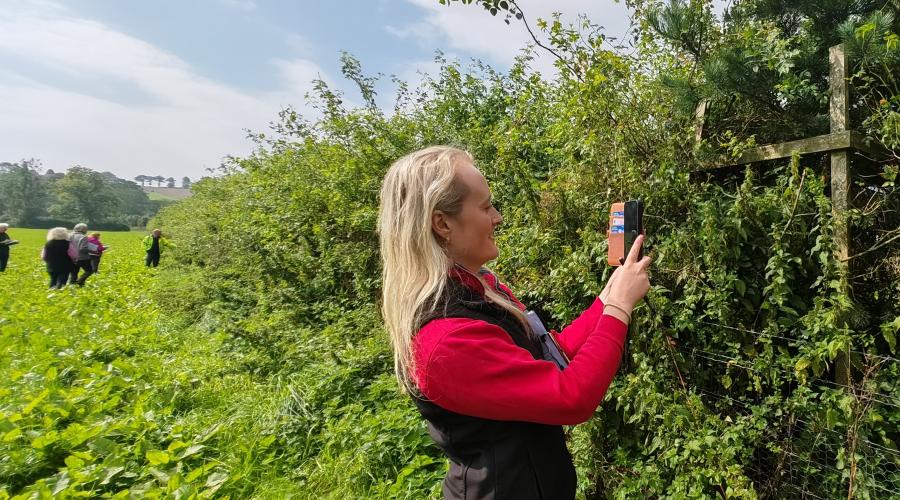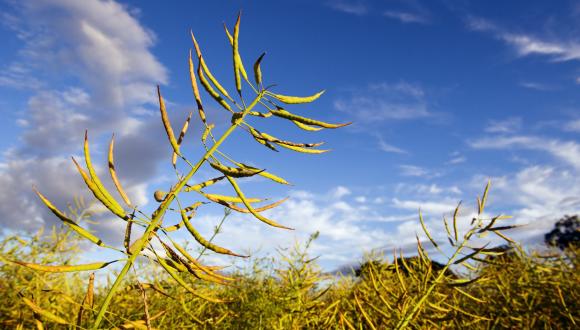
Biodiversity Audit
To be used by farmers and crofters to baseline map the habitats and features on their land and then manage their land to promote biodiversity.
Whole Farm Plan – biodiversity audit
From 2025 a Whole Farm Plan will be a mandatory condition for accessing future government agricultural payments, with the aim of helping farmers and crofters to become more productive and profitable whilst helping to meet Scotland’s climate and nature targets.
By 15 May 2025 all farmers and crofters who want to receive Basic Payment Scheme payments must have completed at least two of five audits and plans. One of these can be a Biodiversity Audit which is currently a habitat map to provide a baseline of habitats and features on your farm or croft.
NatureScot has been developing a biodiversity audit and piloting a mobile app and web platform called Farm Biodiversity Scotland for farmers and crofters to carry out a biodiversity audit. You can use the NatureScot Farm Biodiversity Scotland tool to create a biodiversity audit habitat map for your farm or croft as part of piloting this process.
The pilot is open to a limited number of farmers and crofters across all geographical areas and farm types. All farmers and crofters who are part of piloting through Farm Biodiversity Scotland in 2024 and 2025 will be able to complete their habitat map for the Whole Farm Plan requirement in this way.
Those farmers and crofters who are not able to take part in the pilot can complete their biodiversity audit by following the alternative methods given in the Whole Farm Plan guidance. There is further information to help you identify habitats for mapping for your biodiversity audit at the end of this page.

If you wish to use Farm Biodiversity Scotland for the 2025 piloting and were not involved in 2024, you can sign up either through the mobile app or website:
- Link to website Farm Biodiversity Scotland
- Link to App Store for iPhones Farm Biodiversity Scotland
- Link to Playstore for Android mobile phones Farm Biodiversity Scotland
We will contact you through Farm Biodiversity Scotland to confirm if your request to take part in the pilot has been successful. We are aware of the May deadline for audits and plans to be completed to fulfil the Whole Farm Plan requirements.
If you were involved in 2024 testing on Farm Biodiversity Scotland, we will be in touch with you.
If you need more information you can email biodiversity.audit@nature.scot
Habitat Identification Help
These can be used to help you identify habitats for your biodiversity audit.
Uplands and Peatlands Habitat Guidance video designed for use with NatureScot's Biodiversity Audit guidance to use with the tool Farm Biodiversity Scotland App and web platform. To be used by farmers and crofters to correctly identify habitats to record the biodiversity on their land.
Woodland Habitat Guidance video designed for use with NatureScot's Biodiversity Audit guidance to use with the tool Farm Biodiversity Scotland App and web platform. To be used by farmers and crofters to correctly identify habitats to record the biodiversity on their land.
Grassland Habitat for NatureScot's Biodiversity Audit. Guidance to use with the tool Farm Biodiversity Scotland App and web platform. To be used by farmers and crofters to correctly identify habitats to record the biodiversity on their land.
Here is a tool you can use as a guide to help identify grassland habitats.
The full list of habitats and features for the Biodiversity Audit can be found in the Habitat and Features Key.
The list gives a description as well as a suggested colour for any habitat mapping.
Biodiversity Audit Development
NatureScot has been asked by the Scottish Government to develop a biodiversity audit for farmers and crofters. Maintaining and improving biodiversity on farmland is a key part of the Scottish Government’s Agriculture Reform Programme to deliver its Vision for Scottish Agriculture.
To deliver the biodiversity audit we are piloting the use of a digital tool, Farm Biodiversity Scotland. The Scottish Government recognises the significant value in co-production and testing this approach which we started in 2024 with over 200 farmers and crofters, allowing them to produce a habitat map of their farm and croft. Some also tested the habitat assessments and added species found on their farms.
We have now taken on board the feedback and the next release will continue the pilot through co-production. This will also allow us to further understand user needs and usability for biodiversity auditing.
The biodiversity audit that NatureScot is developing, takes a four-step approach:
Step 1 – map the existing habitats and features on farms and crofts
Step 2 – measure the condition of a range of the habitats
Step 3 – manage through options to maintain or increase the condition of the habitats
Step 4 – monitoring the habitats
Throughout 2023 and 2024 we tested the first two steps of the NatureScot biodiversity audit, working with a range of farmers and crofters on different farm types across Scotland. We have developed and tested these through the digital tool Farm Biodiversity Scotland. The feedback we received from the testers, particularly those new to biodiversity, has been crucial to making it simple and accessible to use. These responses from farmers and crofters formed an important part of the continuing advisory role we play with the Scottish Government.
We also tested step 2 by looking at a basic and a more advanced habitat condition assessment. At present it is not mandatory to have a condition assessment for habitats as part of the Whole Farm Plan, and we will continue to develop these for the future as part of this project.
Step 1 – Mapping
We created a list of habitat and feature types, which is very similar to the Farm Environment Assessment approach in the current Agri-Environment Climate Scheme (AECS). Farmers and crofters can create a habitat map for the whole of their farm or croft, allocating a habitat category for all the land within their business and including boundary and other linear features where present.
Step 2 - Measuring the condition
In the same way that we developed habitat assessment scorecards for our POBAS project (Piloting an outcome Based Approach in Scotland), we developed a simpler version to give us a broad-based condition assessment of key habitats and features on each farm. They have a rating based on ‘red, amber, green’ to represent poor, moderate or good for biodiversity; these are our basic assessments. We have tested a range of these during 2024. Not all habitats will have an assessment; some habitats will just be recorded as a presence or not. We also tested some advanced assessments which look at habitat condition in more depth. Simple recommendations for improving habitat condition are also provided.
Species on your farm or croft
The Farm Biodiversity Scotland platform also allows farmers and crofters to record the presence of key species they see on their land. We will be developing this further having had feedback from those that have tested it that it is a welcome addition to the NatureScot biodiversity audit.
The next stages of the Biodiversity Audit development:
Step 3 – manage through options to maintain or increase the condition of the habitats. We plan to look at how the biodiversity audit can direct farmers and crofters to the series of management options that are relevant to their habitats and features. This will provide further insight to the Agricultural Reform Programme Tiers.
Step 4 – monitoring the habitats
As the cycle of mapping and measuring continues, monitoring the impacts and success of measures that are put into place should be simple and clear. The Biodiversity Audit will provide guidance and advice on how this might be completed, as part of the Agricultural Reform for the future.
If you need more information you can email biodiversity.audit@nature.scot
Find out more
Biodiversity Audit Project and Farm Biodiversity Scotland App - Privacy Statement
Piloting an Outcomes Based Approach to Farming (POBAS)
Natural Capital Assessment Tool - A Whole Farm Approach
Developing a Landscape Scale Natural Capital Tool for Scotland






